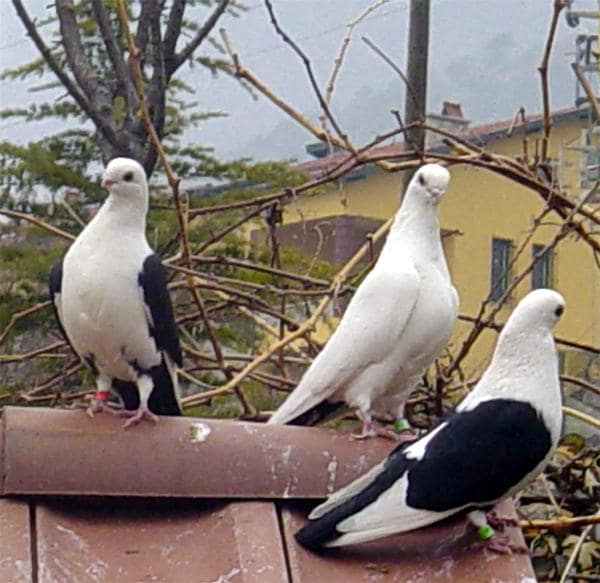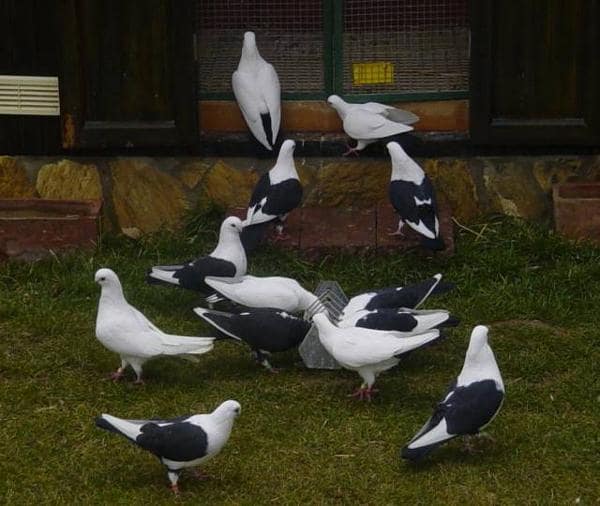
AZMAN
Azman is one of the short faced Anatolian breeds. They do not exist outside of the city of Denizli. Their numbers have been in a speedy decline since the 80’s. Today they are considered to be one of the rare breeds in Turkey. A few fanciers try to protect the breed and its qualities. Denizli Güvercin Evi Derneği (Denizli Pigeon House Union) happens to be the only organization that works on the protection of this breed with the shows and competitions it organizes.
Each bird is called by the names based on their coloration, but they are known by their city of origin. The city they are known by is a good indication of what type of tumblers they are.
University of Pamukkale, Denizli Regional Agricultural Department and the Denizli Güvercin Evi Derneği are currently working together on the establishment of several programs on the protection of this and other Denizli breeds.
The main reason for the decline of the numbers in this breed is known to be the purchases made from İstanbul for its use on the Genetic work that has taken place on the creation of the İstanbul Bango for many years to utilize its short and wide beak structure. However, it is not possible to run into this breed in Istanbul today.
On top of this, when the İstanbul Bango became so popular in Denizli the last 20-25 years, this created the greatest danger for the Azman breed, which is know in the rest of the country as the Denizli Bango. It might be a good prediction to say today's sad situation for the breed has generated the result of the fanciers of Denizli taking ownership of the breed.
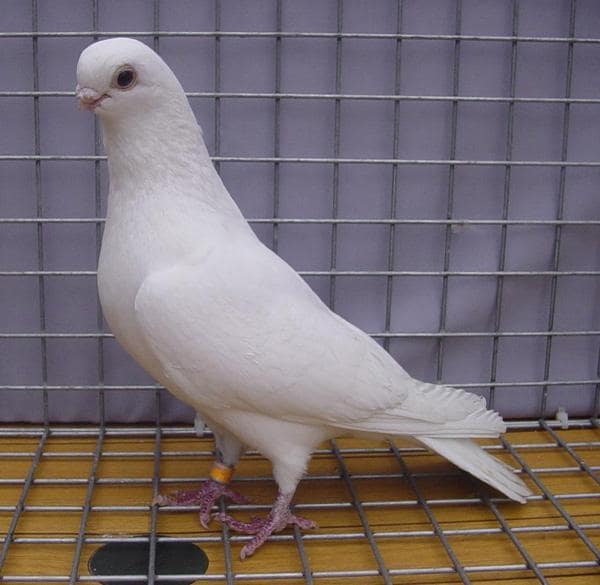
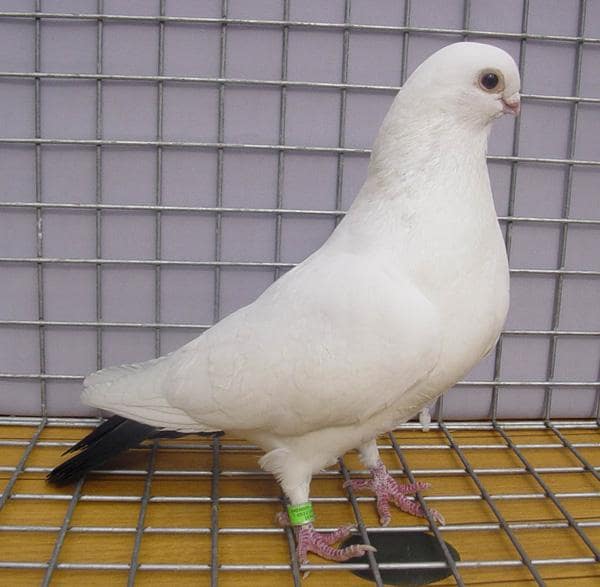
Even though, the İstanbul Bango and the Azman breeds show great physical similarities, they also have great performance differences. Azman basically is a flying breed vs. the İstanbul Bango which is strictly a show breed. Azman can achieve incredible flight condition (stamina) with daily flight exercises. IT can be flown several times in a row with 3-5 minutes breaks in between.
They tend to have an extreme loyalty to their loft. A pre-determined time frame for their flight does not exist but they are very eager to stay in the air for 30-45 minutes. They are very responsive to droppers and when a dropper is shown they tighten up their wings or half close them and start their dive, if the surrounds allow this dive ends inside the loft.
They tend to always land on the same spot and because of this reason it is very easy for a fancier to train them not to land to any spot that is not desired. Despite their timid nature, they respond to training readily. They are flown in groups of 10 to 15 birds and kit extremely tight. The height of their flight depends all on the type of training they get. They can stay in any altitude at any time frame the fancier desires. They are expected to find their home from distances of up to 15-20 km.
The physical qualities that separate the Azman from other short-faced Anatolian breeds found in Turkey like Hünkari (Oriental Frill), İstanbul Bango, Aydın Bango, Baska etc. have been put together by the Denizli Güvercin Evi Derneği as an standard qualities of this breed. These qualities have been classed as Over all looks and Stands, Head and Beak, Neck, Color and Pattern.
Overall looks and Stands:It has a symmetrical body shape. It's wide and strait chest stands somewhat forward. It has a short back with wide shoulders that stand low. Its stomach is narrow and short but strong built. Wings are short, tightly feathered, held tight against the body, and stand flat on top of the tail. Legs are medium height, clear of any feathers and large scaled; toes rather large in make up.
Head and Beak:Head is round; even though its angle gets smaller as it gets close to the beak it is not pointy in shape. Cheeks must be full. Forehead and the top of the nose must not be bulge out. Beak is wide and short. Tip of the beak point downwards. Beak line continues towards the underline of the eyes and located very close to the eyes. All these features can be smaller in females, and this is not considered to be a fault. Eyes are medium size and dark in color. Ring around the eyes must be pale, narrow and in a delicate make up.
Neck:Neck is short and full bodied. It has a strong structure. On the neck or chest there can not be any sign of a rose.
Color and patterns:There are three main colors and three main patterns. Colors are Black, Blue, and Purple. Patterns are colored wing-tail, colored tail, and white self. Colored wing-tails are locally named “Ciba”. Cibas' wings must be colored with a sharp frame. First 8-10 flights must be white. Having 6-7 flights white is not considered to be a fault. However, in both cases there can not be any colored feathers in between the white flights. Thighs of Cibas are also colored. White tail and colored tail with any number of white feathers are not acceptable. Color tails must have a white body and the tail color must end into the body in a sharp line. This lines separation is named “kesme” (cut). The small cap feathers under the tail should not be white. White selfs must not have any other color feather on their body in any location.
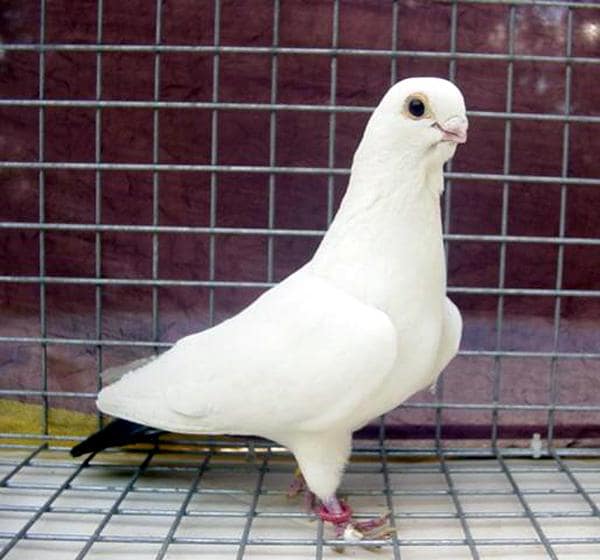
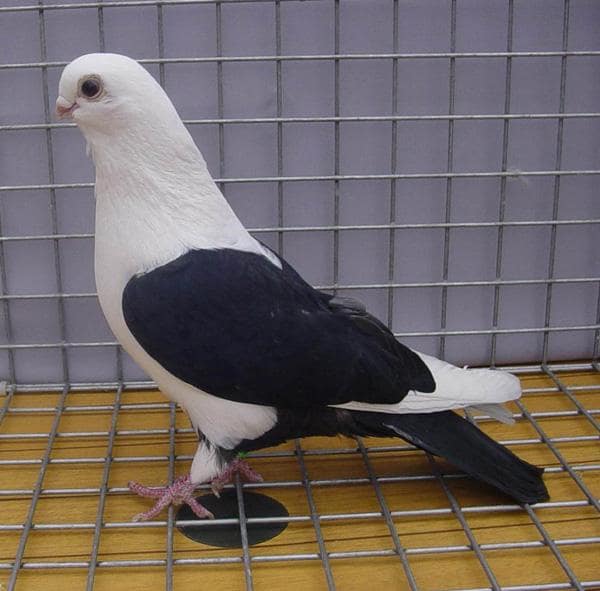
Competition Point Standards
Head Shape (20 Points):It must be corner-less, round and pear like shape. This shape is named "tokur". The corners seen in the İstanbul Bangos and the narrow, long and cone like shape seen in İzmir & Aydın Bangos can not be present in any degree.
Beak Shape (15 Points):Must be wide, short and must be hard/strong in structure. Short but narrow beaks are not acceptable. A wide but just a bit too long of a beak that fits well into the round head can be acceptable. Tip of the beak must point downwards but this angle can not be sharp
Eyes and Eye-Rings (10 Points):Eyes must not be too big, flat, or bulging out. White self, color tail and color wing-tail bids must not have any other color eyes then black. Black or blue pied birds can have dark orange or gray color eyes. The slanted eyes, seen in İstanbul Bangos, can not be acceptable.
Neck and Throat (4 Points):It must be proportionate to the rest of the body. Should not be too narrow or too wide. Neck can not narrow sharply below the beak. It must widen in a gradual angle to meet the head with the body. Chest and the throat must stand straight and not shape individually in steps
Absence of a rose (6 Points):On the neck or chest there can not be any sign of a rose. A shade named "İnce yarık" (thin line) is also not acceptable. Any turned feather is considered to be a fault.
Wing-Tail Proportions (6 Points):Wings and the tail must be proportionate to the body. Wing tips close to the end of the tail and close to the waist are not acceptable.
Legs and Ankles (4 Points):Legs and toes must be short ankles must be thick. There can not be any leg feathering. Bottoms of feet must look full and meaty.
General Structure (10 Points):Bird must be healthy, look alert and be clean. Azman is a very active breed.
Stand (10 Points):It must have the strait-up stand unique to Azman breed, must stand, or walk on its toes. Azman breed do not stand sluggish. They present a soldier like profile.
Color Order (10 Points):Colors must be bright and lively; they must show the "kesme" (cut) line at the ridges of the colored sections. Main colors of Azman are White-self, colored wing-tail, colored tail, and the pied colors. Color tones most commonly seen are black and blue. For example, if a black-tailed Azman's white body color is separated from the black tail white a very sharp line and the small feathers named tail-caps are not white, this is considered to be an ideal coloring. Again, on a Ciba (black-tail/black-wing) color bird if the black wing color does not overflow into the white body color or the white body color does not mix into the black wing color, this is considered to be ideal.
Ring (5 Points):Birds entering the competition must be ringed.
Disqualification Reasons:Any birds entering competition with visible chest rose in any shape or form, evidence or a suspicion of feather removal or coloring for the purpose of hiding faults, missing organs like toe or an eye, misshaped beaks, any young bird feathers still present on the bird (all feathers must have gone through molt once at least).
Denizli Güvercin Evi Derneği, following the goals that resulted in it's establishment; preservation, improvement and educating fanciers on the breeds originating from the city of Denizli like Azman and Dolapçı, is continuing to perform its duties with competition and show organizations. Most importantly, because of these activities, there have been a visible increase in the Azman population and the number of fanciers. There are continuous studies and works with support from the university faculty.
Breed's flight and loyalty qualities are continuing to be tested by fanciers. There are works in place to put together a competition mainly focusing on the flight and loyalty qualities in the close future.
İskender Damgacı
Denizli Güvercin Evi Derneği
General Secretary
